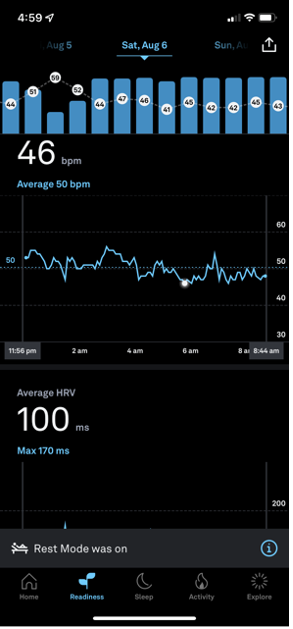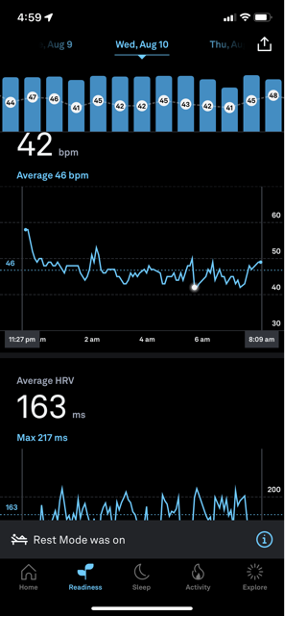Resources
What’s your favorite position? Positions for amazing sleep!
Still waking up sore?
There are three main things I think about, when considering morning soreness. what you do during the day, how you breathe at night, and what position you sleep in. you can learn more about the first two by reading our article here. The first stop on our sleep tour is your spine and what it likes.

Spinal curve:
This alien xenomorph looking thing is your spine. It’s made up 33 bones and its home to your spinal cord. If it looks important, well, that’s because it is. And if your spine isn’t happy while you sleep, then you won’t be waking up happy either. So, when it comes to picking a sleep posture, we want a position that lets your spine be a spine.
Ideally, we would have a C curve in the neck and low back, and a reverse C curve in the middle back. When it comes to sleep, we’re most concerned with the neck and low back. To keep it simple, we want the curve in the neck and low back to be about 30 degrees. Lack of ideal curves, or bends and twists where they shouldn’t be, can result in worse sleep and morning soreness.

The worst position to sleep in
Now let’s move onto how not to sleep. Stomach sleeping is generally regarded to be the worst sleep position. Now there’s nothing inherently wrong with sleeping face down. But you’re going to want to come up for air eventually. Which means, out of necessity you must sleep with your head turned. Now it’s not bad to turn your head to the side, but just like we want to respect the spinal curve, we don’t want to add unnecessary twisting to your spine, for hours on end.
Another stomach sleeping pitfall is most people lack enough hip extension, to do it without cheating. For these people, laying down stomach wise, forces them to “extend” their low back. This is basically increasing the curve of the yellow chunk of your spine (pictured above). Which places increased pressure on the facet joints and is a great way to wake up with a sore back.

Due to the pressure distribution and spinal twisting, you are more likely to become uncomfortable on your stomach resulting in restless poor-quality sleep.
Last and perhaps most importantly, your air way will be compromised, and you are more likely to snore, and breathe through your mouth all night. If there was a perfect recipe for waking up sore, it would be lay on your stomach, head turned to the side, and breathing through your mouth all night. Sound terrible? Then keep reading and to find our top picks for sleep positions!
Side lying
Side sleeping is good 80% of the time, every time. But with a few small tweaks, we can take a good position, and make it a great one!
The first thing you should ask yourself about your side set up, is “what’s my spine doing right”? Once again, there should be curves where we want them, and none where we don’t. So, if we look at a body lying on its side, we can see the shoulders and hips stick out to the side. This kind of acts like the buttresses on a suspension bridge, where some parts are supported, but some parts sag in between.

In the case of your spine, the neck, middle and low back are unsupported and will therefore sag. This leads to increased pressure points, and curves in your spine where there shouldn’t be.
This can lead to poor breathing mechanics, discomfort, restless sleep, and is generally no bueno. Fortunately for us, there is a simple solution.

It’s pillow time!
In the bridge analogy, we would basically want to add more support (pillows) to eliminate sagging point. This has two big advantages. One, it reduces pressure points, by distributing weight over more points. And two, it helps maintain a neutral spine. Pillows are probably the best bet to add a little extra spinal support. Most people are already using a pillow for their head. But if we wanted to check that pillow against our “neutral” spine rules, it would mean that pillow should keep the nose in line with the belly button. A pillow that’s too thick will bend the neck up. Whereas a pillow that is too small will allow the neck to droop. Pillow cube makes a great product that provides support without pushing the head up too high.

Source: pillow cube
But wait, there’s more!
We care a lot about the head and neck but following our neutral spine rules we would also want to add something under the rib cage. This would look like a small pillow or towel roll under the lower ribs. This not only encourages a neutral spine and reduces pressure points, but it also supports your diaphragm. This may help the diaphragm to contract more effectively, helping you breathe better all night long! It takes a little getting used to, but this is one of my favorite sleep posture hacks!
It’s all in the hips:
Don’t forget about those hips! Keeping the thighs lined up with the hip joints is a great way to reduce tension through the hip joints and reduce the tendency to twist through the low back. All you have to do is add a pillow between the knees. This is a simple fix, and one people often figure out on their own, because it just feels good. But one I recommend, because of its simplicity and effectiveness.

Perfect side sleep:
Putting it all together, the perfect side sleep looks like a supportive pillow that keeps the nose in line with the belly button. A small pillow under the lower ribs cage. And a pillow between the knees. This is usually more pillows than people are used to, but in my professional opinions, it is the best side sleep position out there!
Left, right, does it matter?
So, you’re interested in side-sleeping, but only the best side will do? Say no more! Here are a few considerations in picking a side when you’re heading for the ‘hay’.

The Right way to lay
The left and the right side of the body are fundamentally different. Don’t believe me? If you could look inside your body, you’d quickly see left and right are nothing alike. Your heart is on one side, your liver is on the other, stomach is over here, spleen is over there. Left and right just have different things going on. Laying on your left or right is no different. The right side has certain benefits, and draw backs compared to laying left. The Yogis have known about this for a long time and have theorized much of the differences have to do with which nostril you’re breathing through.

In the Yoga tradition the “right nostril . . . is related to sympathetic arousal; the left nostril . . . is the representative of parasympathetic” (1). In other words, the left nostril is better suited towards rest and recovery, whereas the right nostril is more activating and energizing. But you don’t need to take a Yogi’s word for it, here’s a great paper on alternate nostril breathing and how it affects your autonomic nervous system.
If your goal is maximal rest and recovery, laying supported on your right side might be the way to go. As this allows you to maximize left nostril breathing.
Laying down left
Despite the potential benefits of laying down on the right side, if you ask me, left side lying is ‘where it’s at’. In traditional Ayurvedic medicine, it’s thought that laying on the left side promotes better digestion due to stomach position. A pillow under the left ribs also helps to support the left side diaphragm, which aids in breathing and may even help in the fight against muscle imbalances.
Sleeping on the left side, with a pillow under the lower ribs and a pillow between the knees is the number one sleep position I recommend to my patient’s. Many of whom come back and say, “why didn’t you tell me about this sooner?!”.
Is back really best?
In my humble opinion, yes. While side lying can be great, I believe back is even better. And it’s better by a long shot. Side sleeping is kind of like vanilla ice cream. It’s hard to go wrong with vanilla. Whereas sleeping on your back, is more of a souffle. It’s harder to get it right, but those who can pull it off will be greatly rewarded! But to understand why let’s take a detour to understand the nerves of the neck and the glymphatic system a little better.

getting on my nerves
The nerves that come out of your head and neck control a ton of stuff in your body. They affect your heart rate, your breathing, stress levels, digestion. They’re a big deal. The vagus nerve for example, runs through your neck and down to a bunch of your organs. It basically tells your body when to rest and digest. But, if you were to lose the normal 30-degree curve in your neck, guess what? The nerves would get a little squished on. Things like forward head posture, mouth breathing & whiplash can all cause loss of the natural neck curve. This has a lot of major down sides, but most notably can result in vagus nerve compression on one or both sides! This increases stress, impairs digestion, makes it hard to sleep, and makes it much harder to recover. And loss of your neck curve can hamper the flow of cerebral spinal fluid via the glymphatic system.
Glymphatic?
The glymphatic system is kind of like a sewer system, but for your brain. It helps clear out the extra chemicals, and waste products of the day. And it does its best work while you’re asleep. A glymphatic system that works well should leave your brain squeaky clean, whereas a poorly working system will leave you with junk and plaque buildup. There is some evidence to suggest that the glymphatic system functions better in side lying, but most of this research has been done looking at rats (read more here). And as it turns out, humans and rats have different anatomy. For one, the natural curve of a rat’s neck goes the opposite direction.

If you’re one of our human readers, then your goal should be to restore the natural 30-degree lordotic curve to your neck. This not only takes pressure off the nerves of your neck but also allows better glymphatic and lymph flow! While side sleeping can be great, it is not likely to affect the cervical curve.
Get back
So how do I get this coveted 30-degree curve back in my neck? I’m glad you ask. In terms of things you could do while awake the Postural Restoration Institute has a series of exercises designed to promote a healthy, and natural curve of the neck. Seeing a PRI trained therapist is probably the best way to get your curves back!
In terms of things you might do while sleeping: sleep is a great opportunity to passively encourage a proper curve in your neck. And that’s where back sleeping steels the show. Laying on your back with a pillow that gently puts the curve back, is probably the easiest way to start retraining your neck posture. This may help the rest of your spinal muscle to relax, improve glymphatic flow, and take pressure off the nerves of your neck.

The result? Your brain can clear out the junk from the day (thanks glymphatic system), and your nerves can finally let your body calm down. Check out the data from my OURA ring sleep tracker. The first is a normal side sleeping day. Notice my HRV (a measure of how relaxed and recovered I was) is about 100 m/s. This is about my average for a normal night of side sleeping.

Now check out this back sleeping day. The only difference was some Postural Restoration exercises, and back sleeping with a supportive neck pillow. Notice the ludicrous jump in HRV? I can’t guarantee the same results for everyone, but in my experience, nothing bumps up HRV like getting the curve back in your neck!

back sleeping like a pro
Sleeping on your back has the greatest potential return. But it can be temperamental (remember the soufflé)? For example, most people lack the hip mobility to lay without having to compensate through their low back. Laying on your back may also close off your windpipe some and make it harder to breathe easy through the night. Here are a few considerations when laying back.
Try a pillow under your knees. If laying on your back puts stress on your spine, simply add more pillows under your knees at night. This helps flex your hips and reduces the demand on your spine while you sleep.
Consider lifting the head of the bed. This accomplished two things. 1 It may help improve glymphatic flow, and 2 it helps to open your air ways. Elevating the head of the bed may seem like a small tweak, but people are often amazed at how much easier it is to breath, when the head is elevated by 4 or 5 inches. And a neck pillow which helps maintain your neck curve, really seals the deal for back sleeping!

Finding the right pillow for back sleeping:
Finding the right curve for your neck depends on two things, personal preference, and budget. Some of my patient have a history of neck trauma, or changes in their neck curves. Some of these patients have a hard time with a highly supportive neck pillow. If that sounds like you, I highly recommend working with a PRI trainer therapist. But most of my patient respond well to one of the following:
- The Neck Nest: This is my favorite back sleep pillow. Created by chiropractor dr. Peter Martone, the neck nest is the premier back sleep pillow. In addition to creating a great pillow, dr. Martone has thousands of x rays showing improved cervical curves in patients who have used the neck nest. While this pillow is no doubt the best back sleep pillow on the market, it is the priciest option on the list.
- McKenzie cervical roll: this is a classic physical therapy support pillow. It’s the perfect size to support the curves of the neck. Although the material is less substantial and will likely break down faster than the neck nest. This pillow has a lower price point and may be more suitable for those looking to experiment.
- Pool noodle: The most budget friendly option is to repurpose a pool noodle. This is not something I necessarily recommend for sleep, but it is appropriately sized and costs practically nothing.
Sleep on it
To sum it up, our recommendation is to respect your spine! Make sure it bends where it should, and not where it shouldn’t! From worst to best positions, we recommend right side lying, left side lying, and back if you can master the set up!
The information provided should not be used for diagnosing or treating a health problem or disease, and those seeking personal medical advice should consult with a licensed physician. Always seek the advice of your doctor or other qualified health provider regarding a medical condition.